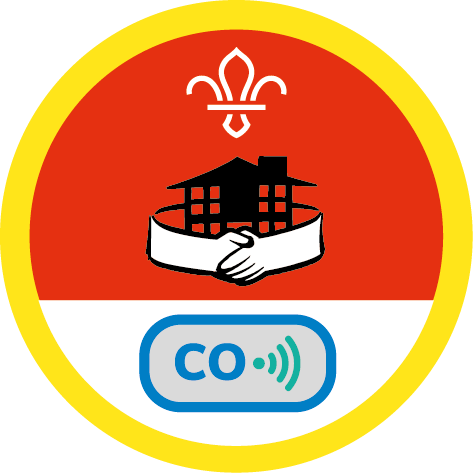Intruder alert
You’ll need
- String
- Chairs
- Tables
- Whistles
- Torch or phone
Before you begin
Be aware that some might find this a difficult topic. They may have experienced it, or may worry about it. The week before, consider telling parents and participants about the session so that they can prepare themselves if necessary, and let you know if it will be tough for them. Make sure everyone understands that the chances of being burgled are small and there are things their families can do to make it less likely.
Be alert
- Discuss what things we have in our houses to protect us from crime. If they’re stuck, suggest things people usually use, such as outside lighting, gravel around the house and locks on the windows.
- Ask the group to think about how burglar alarms work. Encourage them to share their ideas.
- Explain that:
-
- Motion sensors were first used during World War II to detect enemy aircraft. You can now find them on automatic doors, hand dryers and burglar alarm systems.
- This clever tech sends out ultrasonic waves. These are sound waves that cannot be heard by humans.
- The sound waves are sent from the detector and bounce off any still objects back to the detector.
- When these waves are broken by something passing through them, the device activates to open a door, turn on a dryer or sound an alarm.
- For this activity, they will be working in teams to create a motion sensor assault course to stop a ‘burglar’. They will be using a ball of string to represent ultrasonic waves criss-crossing the meeting place, by tying it around something stable, like tables. If there are participants with mobility issues, they should create a course that does not require crawling or climbing through string but can still require ducking and careful navigation. They can increase or decrease the difficulty to suit each team member so that it is a challenge, but not impossible.
- Take it in turns to duck, crawl and step through the ‘ultrasonic waves’, as a burglar would to avoid detection. Even though a real burglar wouldn’t be able to see the waves as they are invisible, they might be able to see where the detectors are and work out where the waves might be.
- Use a bell, whistle or buzzer to sound an alarm when someone touches the string. Bells could be tied on to the string so they ‘activate’ automatically.
- Ask the group what they think might happen to an alarm in a power cut, and let them know that if they have a burglar alarm it should be serviced annually.
Reflection
If you don't have a burglar alarm, what things can you do to help keep your home secure?
(Lock doors and windows, don’t leave keys outside hidden under rocks or plant pots, close windows at night, keep your keys safe, let your parent/carer know as soon as possible if you lose your keys)
Do you feel reassured about all the things you can do to keep your home safe?
Congratulate the group for completing a touch challenge and being brave talking about a difficult topic.
Safety
All activities must be safely managed. You must complete a thorough risk assessment and take appropriate steps to reduce risk. Use the safety checklist to help you plan and risk assess your activity. Always get approval for the activity, and have suitable supervision and an InTouch process.
Add difficulty to the task by blindfolding the ‘intruder’ while another participant gives them instructions to tackle the course.
Try doing this activity in the dark. Tie glowsticks to the beginning, middle and end of each string. Tie bells onto the strings and switch off the lights. Can they get to the other side without the detectors going off?
Make it accessible
All Scout activities should be inclusive and accessible.
To help participants understand how sensors work, get them to create a course by holding torches. Switch on torches and switch off the lights. The light from the torches represents the ultrasonic waves. You can see where the light hits a still object. Ask someone to try to make their way through the course. Participants will be able to see that if the person walks through the light, the light 'wave' has been broken as it can‘t pass through them. This would cause the alarm to go off.
You could complete the Crime at Home activity.
